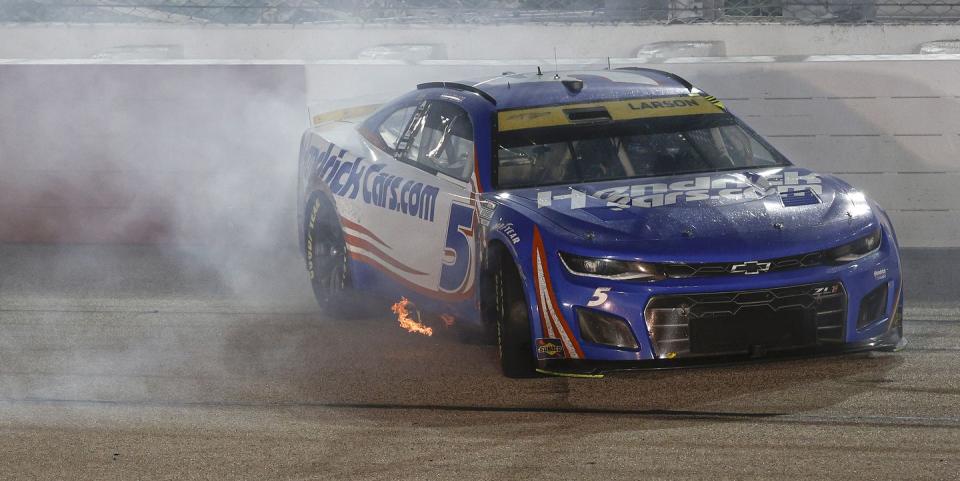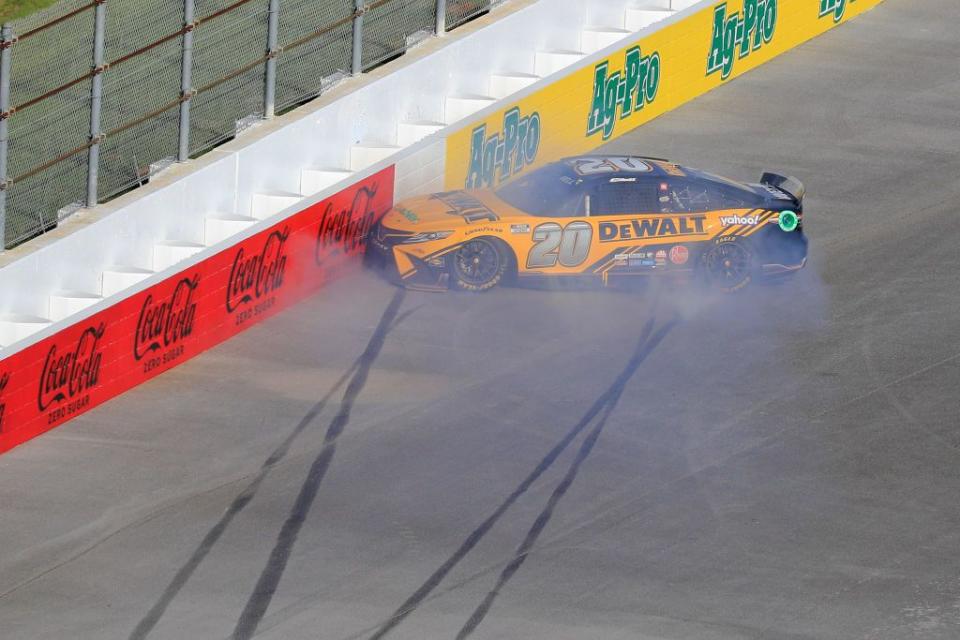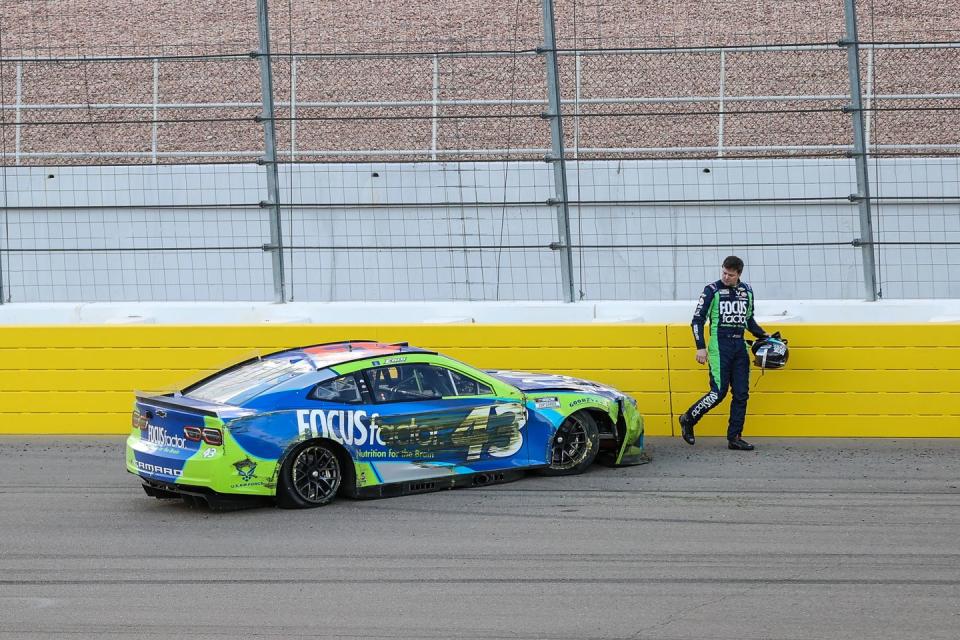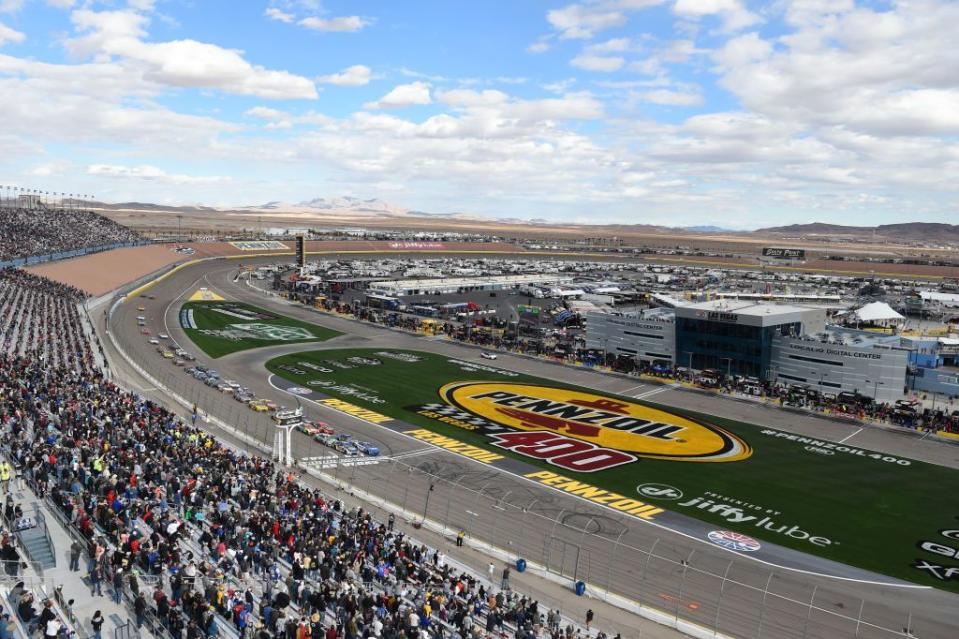Why Time Is Now for NASCAR to Reduce Speeds to Combat Head Injuries

NASCAR drivers have been up in arms about the rigidity of the new Next Gen chassis, but safety is usually a multi-part problem.
Slowing cars by significant horsepower reductions are a short-term option for NASCAR before the off season provides time for possible changes to the Next Gen chassis.
Drivers have confirmed wall impacts being harder in the Next Gen cars after sustaining injuries of various sorts this season.
NASCAR needs to slow speeds by reducing horsepower as a first step in dealing with its head injury problems in the Cup Series before losing another driver during the Playoffs—or to retirement.
The irony in the case of Alex Bowman, eliminated from this year’s Playoffs along with Kurt Busch due to concussion-like symptoms, cannot be avoided. Bowman replaced Dale Earnhardt Jr. when NASCAR’s most popular driver was forced into retirement by a head injury suffered in a crash in 2016. Carl Edwards said his retirement at the conclusion of that season resulted, in part, from a concern about sustaining a head injury.

Drivers have been up in arms about the rigidity of the new Next Gen chassis. But safety is usually a multi-part problem. Slowing cars by significant horsepower reductions are a short-term option for NASCAR before the off season provides time for possible changes to the Next Gen chassis.
NASCAR does not share the information on g-forces, which are a function of speed, from its data recorders used to measure the impact in a crash. But drivers have confirmed wall impacts being harder in the Next Gen cars after sustaining injuries of various sorts, everything from a sore neck to a leg injury. One way to address injurious g-forces in crashes is to reduce the speed.
Although outspoken about chassis rigidity, drivers are sometimes reluctant to talk about reducing speeds, because they worry lower speeds make advancing to the Cup easier for drivers who may not be qualified, itself a safety concern.
For its part, NASCAR has talked about how the Next Gen cars are hitting the wall differently. Both rear impacts and the rigidity are undergoing examination at NASCAR Research and Development in Concord, N.C., which gathers data on every accident with onboard recorders and field reports. NASCAR has already conducted some testing on rear impacts.

The way a car hits and how many times are both significant. Solo incidents at the exit of turns, the crashes of Busch and Bowman share the same characteristics. A rear impact is followed by the front of the car pivoting and hitting the wall a second time. Neither of their two impacts look dramatic, but such meetings with the wall carry plenty of energy on a high-speed oval.
If there’s enough energy to move a driver’s head sharply when a second impact follows a first big impact, that can cause an injury due to the movement of the brain inside the skull in different directions in a short time frame.
Crushable structure in the chassis and SAFER barriers can reduce the overall impact by elongating the time of an incident. But there is always a peak point of g-force when there’s contact with the wall. The faster a car hits the wall, the higher the peak point of energy that goes through the cockpit.
This year’s pole speed with the new Next Gen car was similar at Daytona to the preceding Gen 6 cars and in general the overall lap speeds have been consistent with most pre-pandemic qualifying. (Part of the pandemic procedure was to skip qualifying.)
An exception is the Las Vegas Motor Speedway, where in this year’s spring race the pole speed jumped by 4.387 mph compared to the last available pre-pandemic qualifying session with the Gen 6 cars. Coming immediately after Daytona, the qualifying speed at Las Vegas, where drivers spend more time in the turns, suggests higher cornering speeds for the Next Gen car due to its flat bottom and rear diffuser.

The overall qualifying speed at the Texas Motor Speedway, where Bowman sustained his injury after backing into the wall, have remained consistently high, near 190 mph, on a track whose Turn 4 previously claimed the life of NASCAR Truck Series driver Tony Roper in 2000 and almost ended the career of Ricky Craven due to concussion prior to the track’s first Cup race.
How the cars hit the wall is important, too. A close review of the crash in 2016 at Michigan that led to the injury that eventually ended the career of Earnhardt Jr. shows a similar type of impact to those of Busch, whose rear corner hit at Pocono, and Bowman.
At Michigan, the rear of Earnhardt Jr.’s car hit first, followed by a full body slam within milliseconds. In his case, Earnhardt Jr. had previously suffered concussions, starting with a testing incident in Kansas in 2012, as well as heavy crashes during the 2016 season. But it was this seemingly innocuous and barely visible double impact that caused enough damage to sideline Earnhardt Jr. in a race where the pole speed was 199.557 mph.
Dr. Sid Watkins, a neurosurgeon and the highly respected director of safety in Formula 1 for more than two decades, was the first to identify the possible serious result from a vector of energy going through the cockpit—two energy paths from different directions intersecting in the driver’s cockpit within a short period of time. Such a phenomena may have led to the basal skull fracture of Ernie Irvan after a cut tire and a crash in practice at Michigan in 1994, which eventually forced his retirement. Fortunately for Irvan, his skull fracture in the era before head restraints did not lead to fatal bleeding and he quickly received medical attention at the scene.
Introduced with the Car of Tomorrow, a rigid chassis structure has verifiable safety benefits when used in conjunction with safety cocoons around the driver, especially when combined with crushable structures in the car. The carbon fiber seats, head surrounds, six-point harnesses and head restraints such as the HANS prevent basal skull fractures and other serious injuries. This suite of safety equipment is in a safety cell protected by a rigid car structure, which also avoids potentially injurious penetration. It enabled a driver like Ryan Newman to walk out of the hospital after his horrendous impacts and barrel rolls in a Gen 6 car at Daytona in 2020 and then resume his career.
Perhaps the solution to the type of injuries suffered by two drivers in short order is introducing more crushable structures to the cars at the rear—although that’s where the fuel cell is housed. Perhaps the solution is reducing the cornering speeds by making changes to the Next Gen’s underbody contour or changes to the diffuser. If the new underbodies are causing cars to “break away” differently from the past and hit the wall rear first, lower speeds in the corners will help.
The Next Gen car’s structure likely needs to be changed to make it safer and speeds will continue to be an important part of this equation. Since each mph adds energy to a crash, why not reduce speeds with a significant reduction of horsepower sooner than later while looking for ways to make the new cars safer?
Jonathan Ingram is the author of a book on racing safety, CRASH! From Senna to Earnhardt – How the HANS Helped Save Racing.

 Yahoo Autos
Yahoo Autos 